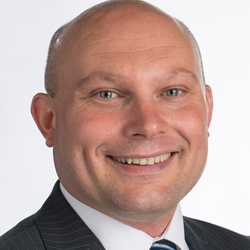UTC+1
120 minutes
In addition to running five year dentistry programmes, dental schools in many European countries, including Belgium, Czech Republic, Germany, Denmark, Finland, Hungary, Ireland, Italy, Netherlands, United Kingdom, Portugal, Sweden, Slovakia, Spain and Norway are running either two year diploma or three year degree programmes for the study of dental hygiene, with or without dental therapy.
In the vast majority of these countries, the teaching of dental hygiene students takes place separately from the teaching of dental students, often with limited or no interaction at all between these two student groups. This is unfortunate and counterproductive for several reasons:
- There is considerable curricular overlap in the teaching of dental hygiene students and dental students, which could be delivered within the ‘dental team’ and in an intraprofessional environment; thereby facilitating interprofessional collaboration and the concept of team training from early on in the education of students of dentistry and dental hygiene
- Dental students and hygiene students do not learn to work together as part of a team during their training; thereby making it more difficult to interact with each other in terms of direct communication and treatment planning, let alone practising effective shared patient care during training
- Following graduation, dentists and hygienists will not have learnt to work together functioning as a team. This makes it more difficult for them to professionally interact with each other practicing team based dentistry and providing holistic patient care, including the complex care needed for an aging population and patients with chronic diseases
To address the above shortcomings in the education of both dental students and dental hygiene students, it is essential to adopt a more integrated approach based on intraprofessional education (IPE) and team training in a shared learning environment. The term “IPE” refers to occasions when students from two or more healthcare professions learn together during all or part of their professional training with the objective of cultivating collaborative team practice to improve the quality of patient care at the individual and population level. This definition is adapted from that used by the Centre for the Advancement of Interprofessional Education.
|
16:00 Welcome to the Intraprofessional Education SIG |
|
16:05 Presentation covering various aspects of Intraprofessional Education |
|
16:30 Breakout room discussion |
|
17:00 Plenary Feeedback and conclusions |
|
17:30 Ends |
The learning outcomes for the SIG on intra-professional education (IPE) are:
- To understand competencies, capabilities and skills students need to develop to become effective members of intraprofessional dental teams
- To understand how intraprofessional education could be promoted to academics and clinical teachers responsible for and involved in the education of the future dental workforce
- To Identify teaching methods that could advance the goal of intraprofessional education to foster team-based education and high-quality shared patient care.
A call for abstracts is not open for this session, however full delegates participation will be encouraged on the session.











